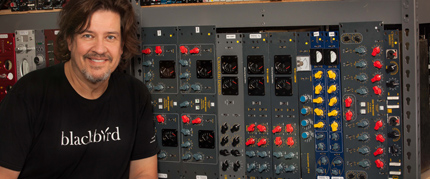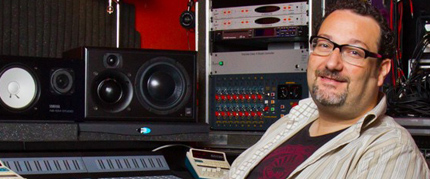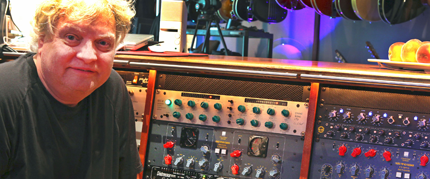EMI TG12413 Limiter Pack (Mac/Win)
by: Eli Crews
Electronic Musician (July 1, 2007 Issue)
The TG12413 Limiter Pack plug-in is the first foray into the digital realm for Abbey Road Studios and Chandler Limited wunderkind Wade Goeke. It’s modeled after the first solid-state limiter made by the technicians at EMI in England in the 1960s, the TG12413, which was designed to replace the venerable Fairchild 660 and 670 tube limiters and EMI’s own RS124 tube compressor. It’s quite possible that some of your favorite albums were recorded through the TG series of equipment if you happen to like, you know, small-potatoes bands like the Beatles and Pink Floyd.
Time Machine
The TG12413 Limiter Pack plug-in comes in two flavors: 1969 and 2005. The 1969 version has the controls of the original TG limiter used on 1969’s Abbey Road: Comp/Limit, Recovery (release time). Hold (which adjusts the amount of compression and was an abbreviation for threshold), and Output. The 2005 version is based on the Chandler TG1 and exchanges an input knob for the hold control and adds an extra 12 dB of input gain for more-extreme limiting capabilities. The two versions share retro EMI TG-series styling, from the red, gray, and black chicken-head knobs to the unique vertical VU meters, in which the needle bounces up from the bottom to reflect the amount of gain reduction induced by the effect. The VU meter also doubles as an indicator of the Hold level on the 1969 version when signal is not passing through the effect.
Installation is easy, and the authorization lives on an iLok dongle. The plug-in is cross-platform, and both TDM and RTAS versions are available, (AU and VST versions are in beta development). Also, the plug-in works very well with the Mackie Control Universal surface.
In Action
The plug-in sounded great on vocals, guitar, bass, and even on the stereo bus, (I actually mastered a couple of tracks through it with great success). But TG12413 really shows its colors on drums, whether on individual mics, the room mics, or the entire drum bus. I went back and forth between the 1969 and 2005 versions a lot, and they’re both stellar, but for different things. In addition, switching between Comp and Limit modes on each version yielded widely varying results, because not only does the ratio change from 2:1 (Comp) to 8:1 (Limit), but the attack times and recovery settings also change between the two modes.
I found the 1969 in compressor mode at low gain-reduction levels and a slow recovery to be the perfect thing on a jazz drummer’s bus. The kit just jelled in that way that makes it sound like a single unit rather than a bunch of separate instruments. On a rock kit, I slammed the room mics through the 2005 with a very fast recovery and got the most musical pumping and breathing I have ever achieved. A/B’ing this against my beloved UAD-1 Fairchild plug-in, I could hear distinctive character traits in each and both sounded fantastic, but I definitely liked TG12413 better for that particular application. The Abbey Road/Chandler plug-in tightened up the low end in a way that was both punchy and warm, while getting rid of some of the boominess of the raw tracks.
Model Student
I also had the distinct pleasure of A/B’ing the plug-in against the original hardware retooling of the Abbey Road classic—the Chandler Limited TG1 Limiter, which Wade Goeke was kind enough to lend me for this review. Although there were subtle differences here and there in the way that the hardware unit and software plug affected the sound of the material, it was shockingly close, and I’d be hard-pressed to say which one I liked better. The TG1 is an excellent piece of gear, but it retails for $4000 (for two channels). The plug-in, on the other hand, has virtually unlimited instances in Pro Tools LE 7.3.1 on a dual 2 GHz Apple G5 with 4 GB of RAM, so the fact that it sounds so similar to the hardware unit is mighty impressive.
In a nutshell, I think the TG12413 plug-in sounds amazing. Not only are there two versions, but each version has two settings that sound completely different, so in a sense it’s four compressors in one. This kind of value is possible only in the digital age, and I commend Chandler Limited for making its awesome sounds available to the budget-limited DAW community.
Speaking of which, keep an eye out for Chandler/EMI/TG EQ plug-ins which are in beta release as of this writing. If they sound anywhere near as good as the limiter plug-in you’ll definitely want to pick those up as well.
—Eli Crews
















